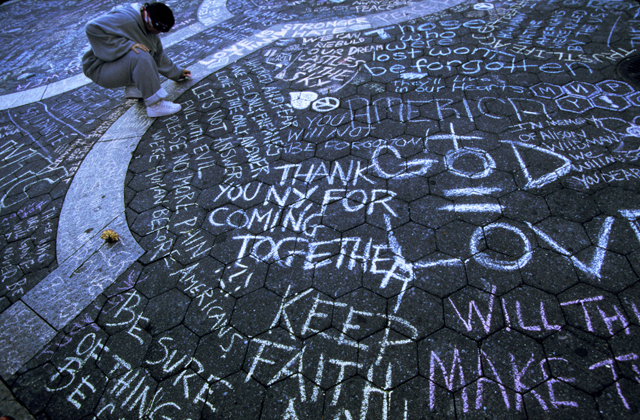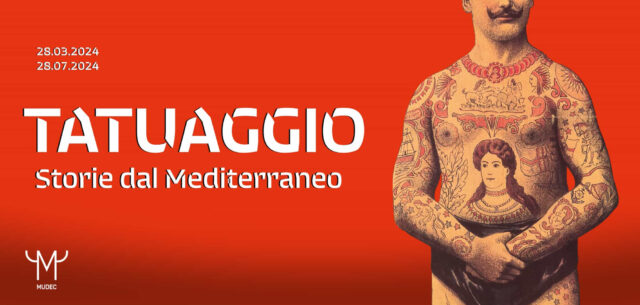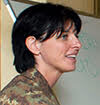 I love walking under the iron and glass vaults of the Grand Palais, the wonderful 19th century Beaux-Arts building in downtown Paris. From the 13th until the 17th of November, I was there, walking and carefully watching the 17th edition of Paris Photo, an event dedicated to contemporary photography. It is a rich ensemble of exhibitions (which included also recent acquisitions and private collections – as the one of Herald Falckenberg), as well as a meeting point for artists, gallery owners, collectors and passionate of photography. But it is also a moment of exchange, open to reflection. Although the town offered (and still is offering) interesting parallel exhibitions, I dedicated my attention to the Grand Palais, which this year hosted 136 galleries and 28 publishers, both French and international, and many interesting projects and pictures from the Mediterranean.
I love walking under the iron and glass vaults of the Grand Palais, the wonderful 19th century Beaux-Arts building in downtown Paris. From the 13th until the 17th of November, I was there, walking and carefully watching the 17th edition of Paris Photo, an event dedicated to contemporary photography. It is a rich ensemble of exhibitions (which included also recent acquisitions and private collections – as the one of Herald Falckenberg), as well as a meeting point for artists, gallery owners, collectors and passionate of photography. But it is also a moment of exchange, open to reflection. Although the town offered (and still is offering) interesting parallel exhibitions, I dedicated my attention to the Grand Palais, which this year hosted 136 galleries and 28 publishers, both French and international, and many interesting projects and pictures from the Mediterranean.
I noticed that the art works were quite varied: some galleries decided to focus on selected authors, while others on a general theme, building mini-collective of different artists. In an historical and contemporary mix of photographs, I found several styles and genres: from reflections on nature and art to personal experiences and moments, from animal portraits to projects on human bodies, from dramatic reportage to artistic and artificial visions of the world where we are living in. This seemed to be the new “market” of photography!
But to Simon Njami, the curator of “A portrait of Marrakech” – a project which involved five Magnum photographs on a two weeks journey across the city of Marrakech – photography is above all about telling stories. The reporters lived and worked alongside local students and the photographic community to visually document their shared artistic experience of the Rose City. The project focused on the space where dialogue can occur between two apparent contradictory realities.

USA. New York City. September 15, 2001. Signing a memorial in Union Square. Contact email:New York : photography@magnumphotos.comParis : magnum@magnumphotos.frLondon : magnum@magnumphotos.co.ukTokyo : tokyo@magnumphotos.co.jpContact phones:New York : +1 212 929 6000Paris: + 33 1 53 42 50 00London: + 44 20 7490 1771Tokyo: + 81 3 3219 0771Image URL:https://www.magnumphotos.com/Archive/C.aspx?VP3=ViewBox_VPage&IID=2K7O3R5BD78&CT=Image&IT=ZoomImage01_VForm
At Gallery Polaris I enjoyed the project “Alger – Cité Climat de France” of Stéphane Couturier, based on urban development and metamorphosis of buildings from the nineteenth century. The facades of Algiers – built during the war in Algeria – become a place of confrontation between GIA (Armed Islamic Group of Algeria) and the power, as well as a stronghold of all trafficking.
At Gallery Bourouina (Berlin), which for the first time participated at Paris Photo, I met Lara Dhondt‘s work: black and white images of forgotten and found objects and material in the urban landscape of Paris. An effort to give to these marginal places an human dimension and dignity. The photos of the series “Momento” were hung on walls or placed on the floor.
The eyes covered by red spots of a young girl allowed me to know, at Gallery Esther Woerdehoff, a photographer, Carolle Benitah. She worked on two new series: “Ce qu’on ne peut pas voir” and “Ce qu’on ne peut pas dire” (“What we can not see” and “What we can not say”). The artist highlights in red ink some self-portraits: fragments of anatomy on her black and white passport photos.
Maybe a little more insightful are the eyes of a child, an Egyptian Bedouin photographed by Jan C. Schlegel and exposed at Gallery Bernheimer. The portrait, which has had many buyers, belongs to the project “Pain & Beauty” started in 1998. The author traveled regularly in Africa and Asia, watching and shooting ethnic groups and tribes in their own habit .
What captured also my attention were the big size images of Du Zhenjun at Galley RX, the “Babel” series: a result of an electronic collage in which the multidisciplinary artist explores his personal and apolitical vision of the world bent on ruin. Imposing Tower of Babel stand out as symbols of power which dominates over imminent destruction.
I ended my “Mediterranean photo tour” with a look at the past: to celebrate Robert Capa’s 100th anniversary, the Daniel Blau gallery exhibited 65 mainly unknown photographs, discovered in the archives of an agency closing. The pictures (taken with a Rolleiflex – 35mm) have been taken in Italy, France and Russia during World War II. Some of them – those which have been chosen by newspapers and magazines – had a red marker sign on, indicating which part of the frame were selected to be published. Capa’s photographs were the perfect end after a walk of great satisfaction, between culture and visions, details and nuances of this present, future and past life.























